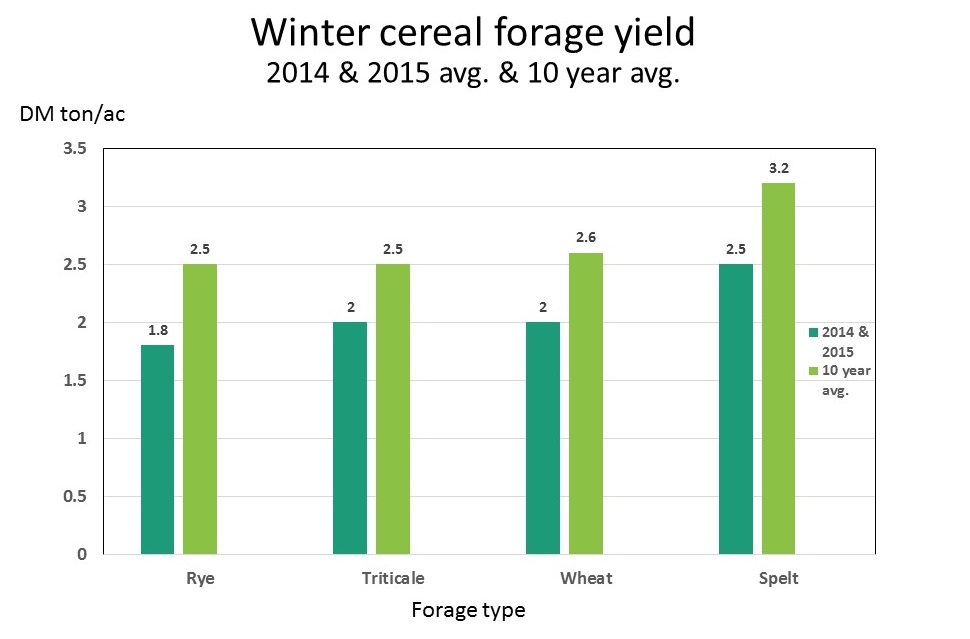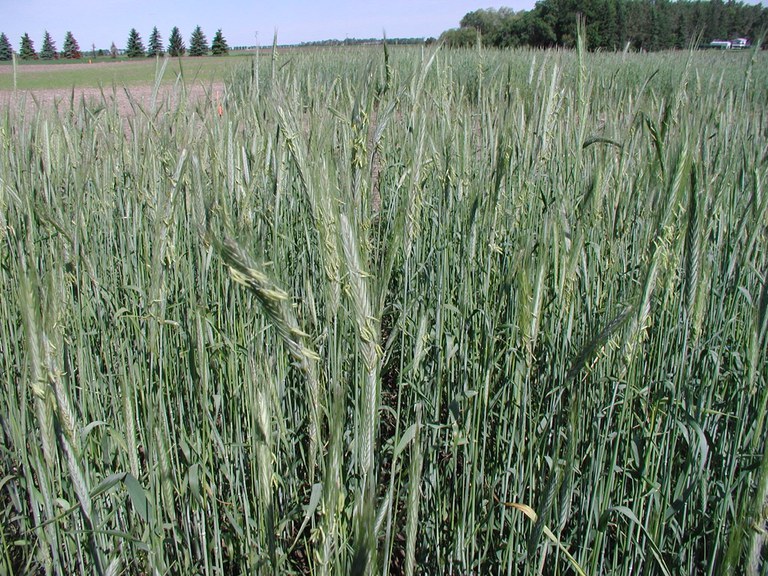Winter Rye Research at the CREC - Using winter rye as a forage crop
The winter rye focus at the CREC is quite broad ranging from small plot research related to grain, forage, cover crop, weed control, and variety development to field scale seed and forage production. Winter rye has been evaluated as forage crop at the CREC demonstrating its value as a reliable forage crop that provides cover and can extend the haying/grazing season. The use of winter rye as forage is a method of integrating cropland into a livestock system. In harsher northern climates like North Dakota, fall grazing of winter rye is limited although spring grazing is a possibility as rye is one of the first plants to initiate growth and accumulate biomass in the spring. Therefore advantages of using winter rye as a forage crop include the early spring growth along with an associated early harvest, providing an opportunity to sown a second crop for haying, grazing or cover cropping if adequate moisture and fertility levels are present. Average harvest dates of winter rye as a forage crop compared to other winter forages are presented in table 1. Average harvest date (10 year) compared to the past two growing seasons are presented illustrating differences within years.
Spring stand data (not shown here) illustrates that rye is the most winter hardy compared to the other winter cereals. Average harvest dates (table 1.) gathered over the years show the differences among the crop types in maturity. Forage treatment harvest dates were determined by the growth stage of the forage each year. Rye was harvested first, followed by triticale, wheat and then spelt. Harvest stage for all treatments was early to mid-anthesis or 5-10 days after heading depending on forage species. Results (table 2.) illustrate the relative yield differences among the winter cereal types trialed. Forage yields for winter rye, 2.5 ton/ac DM, are similar to winter wheat and triticale during the years of these trials. Forage yield of winter spelt is greater than the other winter cereals compared. This yield difference may in part be due to the later maturity of spelt. Rye tends to be lower in quality when compared to wheat or other crops used. Although significant quality differences exist they are minor comparing the crops. Winter wheat has the highest crude protein and TDN along with the lowest fiber values. Average protein for rye has been 11.5% with a TDN of 54. Relative Feed Value (RFV) which use multiple parameters to measure the forage quality show rye to be at 97.
Table 2. Forage yields, tons/ac DM

Steve Zwinger
Agronomy Research Specialist

Winter rye at anthesis on June 7, 2010 at the CREC.


